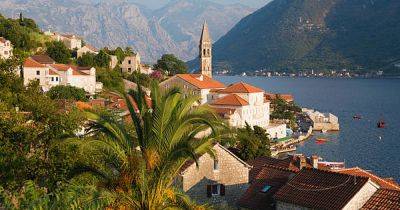Experts speak out on Santorini earthquake swarm amid 'eruption' fears
Tourists and residents have fled a popular Greek holiday island amid fears of more earthquakes after nearly 300 tremors were recorded over the past three days.
A total of 37 earthquakes exceeding magnitude 4 have been recorded on Santorini, with more than 280 earthquakes recorded across Greek islands in a 48-hour period, according to the University of Athens' earthquake tracking website.
The largest earthquake recorded so far was a magnitude 5, recorded northeast of the popular holiday island at 2.27 pm local time (12.27 pm GMT).
The Greek authorities have ordered emergency rescue crews to Santorini as a precautionary measure. Residents and tourists have been evacuated to safe zones, with others advised to avoid large indoor gatherings and hotels instructed to drain swimming pools to reduce potential building damage from an earthquake.
The tremors have sparked fears of a volcanic eruption or tsunami in the region, with scientists warning more powerful earthquakes could be coming. But are they expecting any volcanoes in the region to erupt?
The island of Santorini sits on a volcano called Santorini caldera, which is predominantly underwater. It lies on the Hellenic Volcanic Arc, which is a chain of volcanic islands created by plate tectonics. The last major eruption here was in the 1950s.
Despite fears of an eruption, experts say the earthquakes have been caused by the movement of plates, or plate tectonics, rather than volcanic activity. Seismologist Dr Gerassimos Papadopoulos said that the quakes were “tectonic, not volcanic”.
This isn't the first time Santorini has seen a ‘swarm’ of small earthquakes. A similar event occurred around the island in 2011 and 2012, but the ongoing swarm appears to be more severe.
Greece








